Even though your ATV’s engine charges the battery while you are riding (via the stator), it’s usually not enough to keep the battery topped up.
You may even find that starting the engine, using headlights, and operating equipment such as a winch use more power from the battery than the engine puts in.
Unless you often go on long rides, you could easily end up with a dead battery. Or your battery may stay in a perpetually low charge condition, which reduces its lifespan.
It’s also essential to keep the battery charged if you are not going to use the ATV for a long time. So one of the things you’ll need to figure out, if you own an ATV, is how to charge the battery from an external power source.
In this guide, we explain all the options you have from manual chargers and car chargers to smart automatic chargers.
What You'll Learn Today
The right charger for your ATV battery depends on what kind of battery you have.
The first step is identifying which battery is in your ATV. It should be labelled clearly on the side.
If you can’t read the label or there isn’t one, here’s how to tell which battery you have.
If it has liquid inside, and has removable caps on top, that’s a flooded lead acid battery. It’ll also have a partially clear housing, allowing you to monitor the level of the liquid inside.
If it has liquid inside, but has a flat top with no caps, that’s a sealed lead acid battery. It can also be a VRLA battery.
If the battery looks like a lead acid battery, but has a flat top and you can hear any liquid inside, that’s a GEL-cell battery or an AGM battery.
If the battery is small and very light, that’s a lithium ion battery.
All ATV batteries, regardless of the type, need a 12V charger that delivers a low current of between 1 and 3 amps.
Flooded lead acid, sealed lead acid, VRLA and AGM batteries can be charged with a manual charger. However, you need to monitor battery charge using a voltmeter to ensure you do not overcharge it.
However, you need to monitor battery charge using a voltmeter to ensure you do not overcharge it.
This is especially important for sealed lead acid and VRLA batteries, as there’s no way to top them up after overcharging and they could get permanently damaged.
For Gel batteries, you need a charger specifically for this type of battery. The same goes for lithium ion; look for a lithium ion-compatible charger.
If you want to avoid all this hassle, we recommend getting an automatic battery charger. Unlike a manual charger that needs to be turned off or the current setting changed when the battery gets to a certain level, you can connect an automatic charger and walk away.
It automatically recognizes the battery voltage, and delivers the right voltage and current. It’ll automatically stop charging, or go into trickle mode when the battery is full. So you never have to worry about damaging your ATV battery.
You can charge the ATV battery while it’s still in the vehicle, or you can take it out. Just make sure you charge it in a well ventilated area. The charging process produces flammable gasses.
Just make sure you charge it in a well ventilated area. The charging process produces flammable gasses.
If you are using a manual charger, check the voltage of the battery using a voltmeter. This will tell you how low the battery is, and how much time it’ll take to recharge it.
Next, connect the red lead of the charger to the positive terminal of the batter, and the negative lead to the negative terminal or a piece of metal around the engine area.
Set the manual charger to the right charging current. To be safe, select a current that’s no more than a tenth of the battery’s Ah. For a 30Ah battery, set the current on the charger to no more than 3A.
Plug in the charger and start the charging process. Keep monitoring the battery charge level. When it gets to 80%, turn down current to half what it is. This allows the battery to fully charge.
When it’s fully charged, switch off the charger immediately. If you’ll be leaving the battery sitting for a long time, you can turn on maintenance mode, if the charger has one or buy a battery tender to keep it charged.
If you have a traditional flooded lead acid battery, here’s a detailed video on how to fill and charge it.
https://youtu.be/wFYR49WGI74Video can’t be loaded because JavaScript is disabled: Yuasa Battery Basics – Battery Charging (https://youtu.be/wFYR49WGI74)
An automatic charger is much easier to use. You don’t need to check battery voltage or monitor the battery.
All you need to do is select the type of battery and voltage. Most automatic/intelligent chargers come with dedicated charging modes for AGM, lithium ion, Gel, and other types of batteries.
Connect the charger to the battery and leave it to charge. It’ll safely charge the battery and keep it topped off without overcharging it.
Car battery chargers typically output 10 amps of current, which is too much for an ATV battery. It can overheat and permanently damage the battery.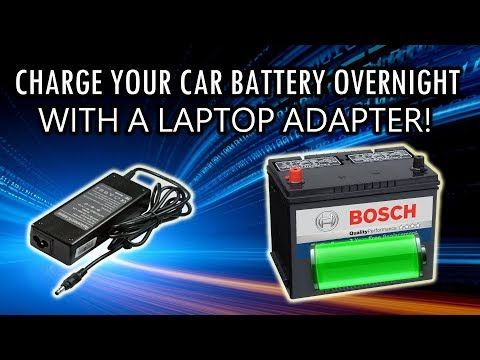
Unless the charger has a setting to limit current to less than 3 amps, do not use a car charger.
If you can reduce current to under 3 amps, use the same procedure as a manual charger.
Yes, you can charge your ATV battery with your car, but only to jumpstart it. This is useful if your ATV won’t start because the battery is dead.
Use jumper cables to connect the car battery to the ATV battery. Do not start the car. That might deliver too much power and damage the small ATV battery.
The car battery has enough charge to revive a dead ATV battery. Disconnect the jumper cables after a few minutes and try starting the ATV again.
To emphasise, this method is just for jumpstarting. Do not use it to charge the ATV battery to capacity since you cannot control how much current and voltage it’s receiving.
A dead battery can be impossible to charge with most smart chargers. That’s because the battery voltage is too low to be detected by the charger. So you need to either jumpstart the battery (as we’ve described above) or trick the charger to charge the dead battery.
That’s because the battery voltage is too low to be detected by the charger. So you need to either jumpstart the battery (as we’ve described above) or trick the charger to charge the dead battery.
To trick the charger, you’ll need a healthy charged battery. Use jumper cables to connect the two batteries. Then connect the battery charger to the dead battery.
Once it starts charging, you can disconnect the healthy battery.
Note: Some advanced smart chargers nowadays can detect very low voltages, allowing them to charge dead batteries.
To estimate how long it’ll take to charge a fully discharged battery, divide its Ah rating with the current you are charging at.
A 30Ah battery being charged at 3A will take about 10 hours to get to full charge.
However, the actual charging time will vary depending on temperature, the health of the battery, and the quality of the charger.
For empty batteries, charging time could be anywhere between 10 and 20 hours. A half full battery will take between 6 and 10 hours to recharge.
Yes, you can overcharge an ATV battery. This happens if you use a charger that delivers too much current or voltage. Leaving a manual charger plugged in even after the battery is full can also overcharge it.
Overcharging can damage a battery, often permanently. This is especially so for sealed batteries, where you can’t open caps and replenish the electrolyte.
Yes, you can use a car battery in your ATV, as long as it is a 12V battery. Any 12V battery will be compatible with your ATV’s 12V system.
In fact, many ATV owners say they’ve fitted bigger batteries in their ATVs to operate winches, ploughs, heaters, and other power-hungry ATV accessories and equipment.
That said, there are two things to keep in mind before you use a car battery in your ATV.
The first one is weight.
ATV batteries are smaller and lighter than big car batteries. Before you switch to a heavy car battery, make sure the added weight is not going to be an issue. Also, check to make sure you have the space for a larger battery.
Two, you’ll need to charge the battery regularly.
The stator on ATVs struggles to keep the small ATV battery charged. It’ll be ineffective when connected to a high-capacity car battery.
So you’ll need to charge the battery often to keep it topped up. This means investing in a good quality battery charger.
In this case you can get a 10A battery charger to safely charge the car battery.
From time to time, you may need to charge your ATV or UTV battery using an external charger. The bike’s own charging system does not always have the capacity to keep up with the battery drain even from regular use. Some new batteries will also need charging before use.
Some new batteries will also need charging before use.
This guide will tell you how to charge any ATV or UTV battery and answer some of the most common questions people have about the charging process.
Page Contents
ATVs do have a built-in charging system that is powered by the bike’s engine. But the current it provides is not very high.
You can charge the battery by going for a long ride, but it’s not always practical. Instead, you may use an external battery charger.
Tools and gear required:
The battery and charger must stay dry during the whole charging process.
Also, the battery must be somewhere well-ventilated to vent out any gases from the charging process.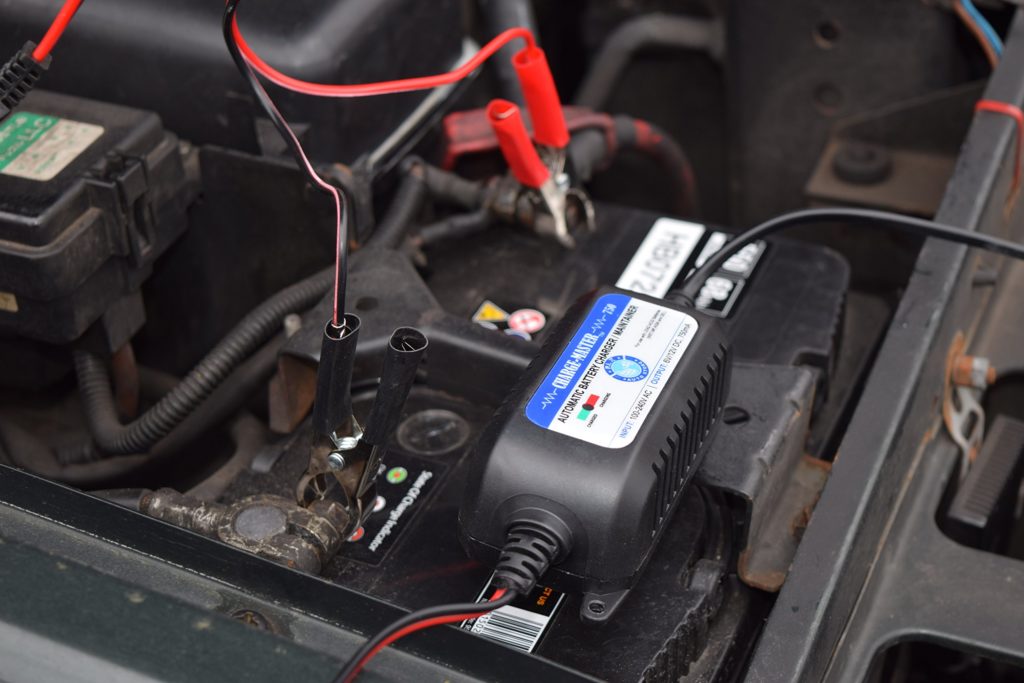
Overcharging or even just charging a battery causes a chemical process that releases explosive hydrogen gas. With proper venting, you minimize the risk of the gas gets ignited by a spark, which may cause an explosion.
A garage or shed where you can leave the garage door open would be a good location.
If you don’t have a dry and well-ventilated area that will fit your whole ATV, consider removing the battery from the bike to charge it.
The ATV and all accessories should be turned off when charging to prevent sparks.
You need to make sure you have proper access to the battery. Some ATVs will have their battery hidden behind a plastic cover that needs to be removed for access. Others have the battery readily accessible without removing any parts.
The battery on my Polaris Sportsman XP1000 is hidden under the front cargo rack cover.After locating the battery you should visually inspect it to look for cracks or other damages.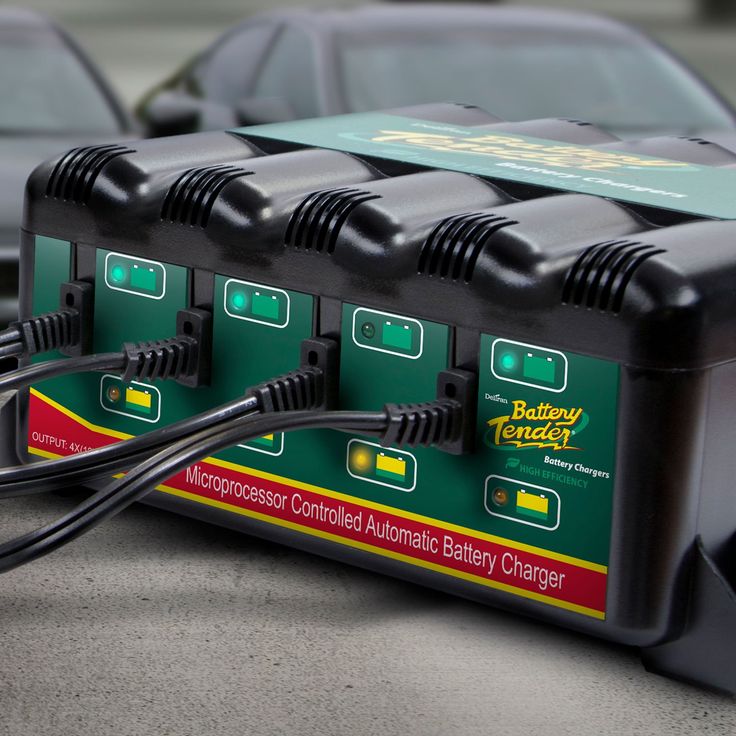 Never attempt to charge a damaged battery!
Never attempt to charge a damaged battery!
Before you hook up the charger, you need to identify what type of battery you have.
Some types of batteries require a specific type of charger to charge properly, or that you add a few additional battery-specific steps to the charging process.
Here is a list of the different types of batteries you may find on an ATV or UTV, and how to tell them apart.
All batteries should have a label that indicates the battery-type, but sometimes these have worn off. Check out this post to learn what ATV battery numbers mean.
Also, look for a part number. A quick google search will tell you exactly what battery you have if you enter this number.
FLA batteries are a non-sealed wet-cell style of batteries that uses lead plates and liquid battery acid as an electrolyte.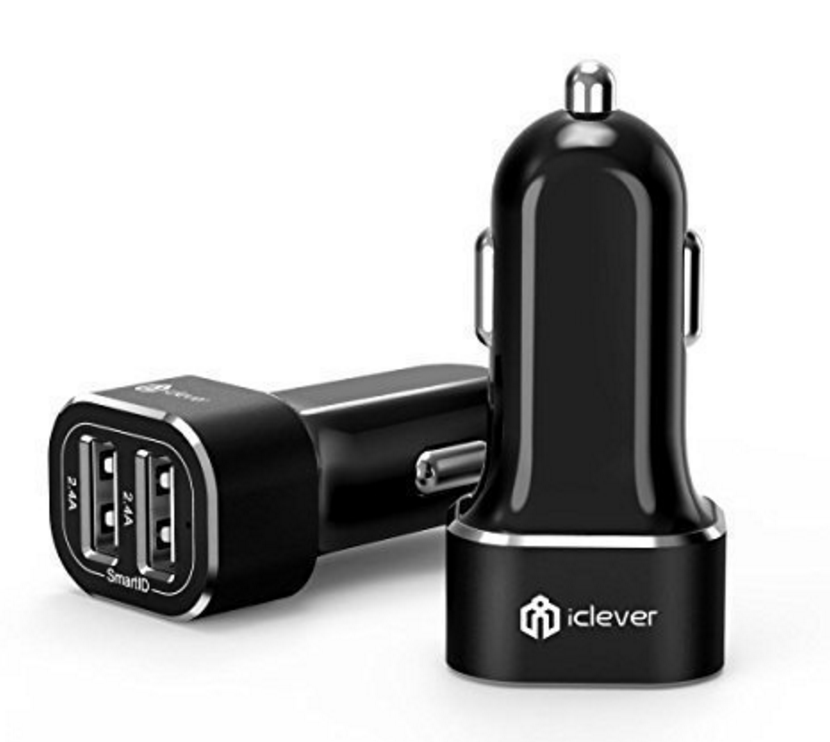 On top of the battery, there are removable caps, one for each cell. The caps are either threaded or pull-out style.
On top of the battery, there are removable caps, one for each cell. The caps are either threaded or pull-out style.
Another way of telling that you have an FLA battery is by its semi-transparent casing, where you will see the water level inside the battery. There are marks to indicate the maximum and minimum level of electrolyte.
FLA batteries only: Before you begin charging you should remove the caps to verify that the lead plates are covered by electrolyte fluid. Add distilled water if the level is below the minimum mark.
SLA and VRLA are different acronyms for the same type of battery. Their construction is quite similar to conventional flooded batteries, but there is one main difference.
If you overcharge a sealed battery, there is no way to open it to add more fluid. They have a flat top with no filling ports or caps. Never try to pry-open a sealed battery!
Type 3: Lithium-ion batteryThe easiest way to know that you have a Lithium-ion battery is to feel its weight.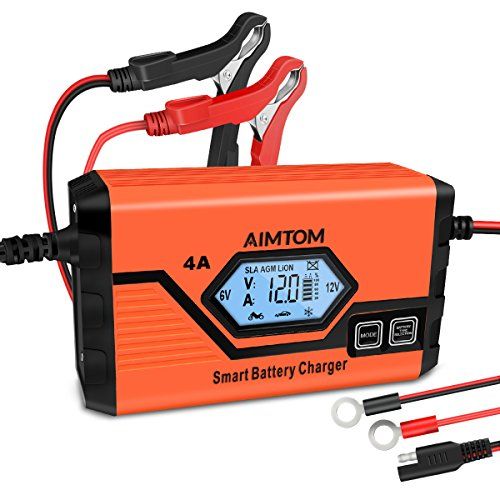 They weigh about 1/10th or less of other types of batteries.
They weigh about 1/10th or less of other types of batteries.
Gel-cells are also lead-acid batteries. But instead of being a liquid, the electrolyte is in gel form. GEL-cells are not that common on ATVs because they are more expensive and do not offer the same power capacity as the others on this list.
A GEL-cell battery looks very similar to an SLA battery because of its sealed flat top. One way to tell them apart is by shaking the battery. You should hear the battery acid splashing around inside an SLA battery, while you will hear nothing when shaking a gel-filled battery.
GEL batteries are not the best option for ATVs, but some use them.AGM batteries are another variation of a lead-acid dry-cell battery. They are completely sealed and have a fine sponge-like mesh of glass fibers inside.
As with the GEL battery, you won’t hear any movement inside when shaking an AGM battery. Other than their labeling, it may be hard to tell them apart. Look up the model-number online if you are not sure.
The battery on my Polaris Sportsman XP1000 is a real pain to reach. But luckily, I was able to see the part number through the wires. A quick google search reveals that it’s a YUASA 18.9Ah AGM battery.If you use the wrong type of charger for your battery type, or set up a manual charger incorrectly, overcharge or undercharge the battery which may cause permanent damage.
Using a good quality, intelligent charger that is compliant with your type of battery is the easiest way to charge your battery safely. Under certain conditions, you may also use a manual bench-style charger.
A quality intelligent charger will be able to charge a variety of different battery types.Here are some guidelines to what type of chargers you may and may not use on different types of ATV and UTV batteries:
For all ATV and UTV batteries
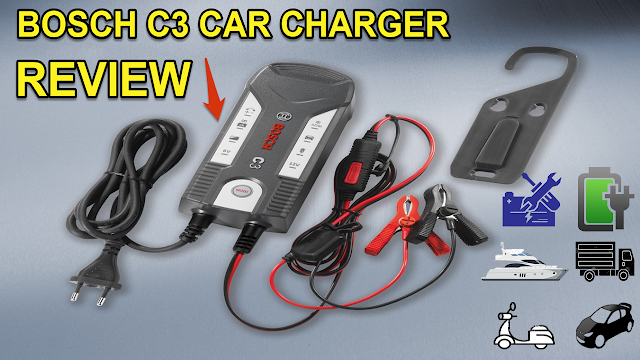
Flooded lead-acid (FLA) battery
These batteries are the least picky when it comes to choosing a charger. If you overcharge a flooded battery, you may just add distilled water. Any manual or automatic charger will work as long as they are the right voltage and have low-amp settings.
Absorbed glass mat (AGM) and sealed lead-acid (SLA) batteries
While it is possible to charge both AGM and SLA batteries with a manual charger, it is not recommended. If you don’t monitor the charging process carefully, you may overcharge, which would cause gassing and water depletion.
Sealed batteries cannot be topped off, so the damage is permanent. That’s why it’s better to always use an intelligent charger for any sealed battery like AGM and SLA batteries.
Some, but not all intelligent chargers, will have a dedicated AGM charge mode. AGM and SLA batteries have a very similar charge profile. Therefore most brands of AGM batteries, as well as SLA batteries, will have no problems with any 12-volt intelligent battery charger as a charge source.
Therefore most brands of AGM batteries, as well as SLA batteries, will have no problems with any 12-volt intelligent battery charger as a charge source.
According to Optima (https://optimabatteries.com), a high-quality AGM compliant charger may improve battery performance and lifespan, but most battery chargers and maintainers will work just fine on Optima brand batteries and other AGM batteries.
GEL-cell battery
GEL-cell batteries are the most sensitive and require a very specific charge profile. The higher voltage from a flooded or AGM charger causes permanent hydrogen bubbles in the gelled electrolyte, which reduces battery capacity or ruin the battery altogether.
Never use a constant current manual charger to charge a GEL-cell battery, only a GEL-cell compliant intelligent charger. The charger should have reliable temperature sensing, voltage regulation, and a specific GEL-cell mode.
Lithium-ion battery
Technically you can charge a lithium-ion battery with a manual charger, but it is not recommended. If you don’t follow a specific procedure, you will damage the battery permanently.
If you don’t follow a specific procedure, you will damage the battery permanently.
It’s recommended that you only use a Lithium-ion compliant charger.
Lithium-ions charge fast and at a higher voltage. A manual charger or even a standard intelligent charger will likely undercharge a Lithium-ion battery, which may damage the battery over time.
This step is not mandatory if you use a fully automatic charger that you know is compliant with your type of battery. The charger will do the job of choosing the right charge profile for you.
But if you use a constant current manual style of a charger, you need to know the battery’s voltage to be able to monitor the charging process.
In any case, the state of charge will tell you if your battery is completely dead or if it just needs to be topped off. It will also give you an indication of what charge time to expect.
Note that different types of batteries reach the same state of charge at different voltage levels.
| State of charge | Charge time |
| New (0%) | 14 – 20 hours or more |
| 75% | 3 – 6 hours |
| 50% | 6 – 10 hours |
| 25% | 10 – 14 hours |
A simplified formula to calculate the charge time of an empty battery is by dividing battery Ah rating with charging current in A (ampere). Charging a completely flat 15Ah battery with a 1,5A charger would take 10 hours.
Charging times will vary depending on various factors:
If you have a smart battery charger, it will stop charging automatically as soon as the battery is fully charged. Usually, this should take no more than 12-16 hours unless the battery was completely flat.
Usually, this should take no more than 12-16 hours unless the battery was completely flat.
Do not plug the charger to a wall socket yet.
Your charger has one positive lead and one negative lead. The positive lead will have a red clamp and the negative lead clamp will be black.
The red clamp will be connected to the positive battery terminal. To identify the positive battery terminal, look for one or more of these markings:
Make sure the terminal is clean to ensure a proper connection. Use a wire brush, and remember to wear your eye protection.
The negative will be connected to frame ground. Look for a bare, solid metal part of the frame or engine. Bare metal bolts are often good options. Make sure your ground connection is clean as well.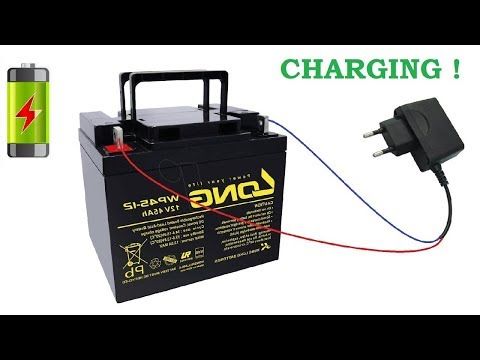
When removing the first lead after charging, there might be a small spark. It’s best if this spark happens somewhere away from the battery where there is less risk of gas build-up from the charging process.
Modern intelligent chargers are designed not to overcharge the battery, so you will most likely have no issues if you choose to connect the negative lead directly to the negative battery terminal instead of the frame. After all, this is what most charger manuals will tell you to do.
Connecting it to the frame or engine instead just adds one more layer of safety.
From an electrical point of view, the battery will charge just as well whichever of the two options you choose.
Your negative battery terminal will have either:
Now that your connections are clean you can connect the charge leads.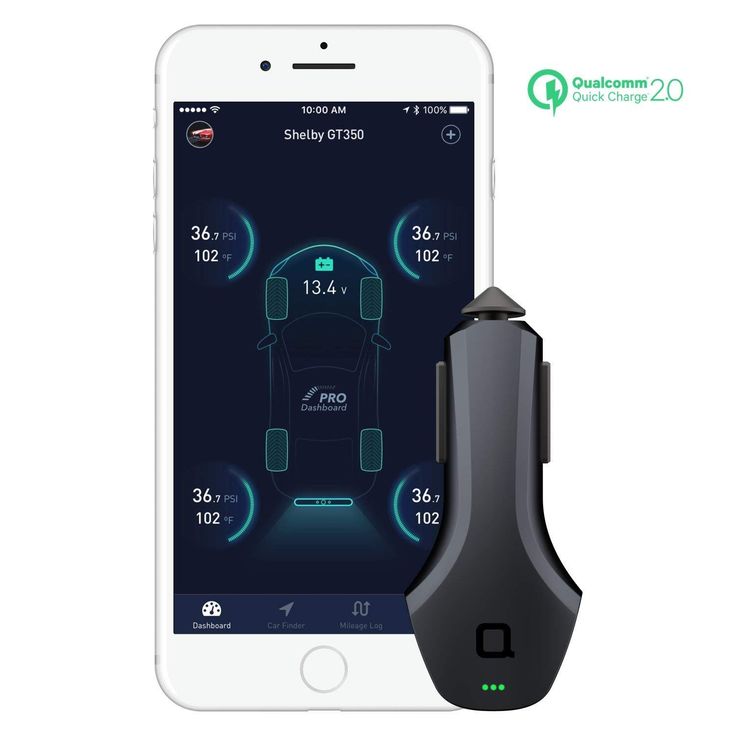
Now plug the charger to a wall socket, but make sure it is not charging yet.
Manual charger
You need to set the charge rate (current) manually. A good rule of thumb to know what amperage your battery should be charged at is to divide its Ah- rating by ten. A 15Ah battery should use a charger with a power output of no more than 1,5A. You should never charge an ATV battery with more than 3A.
Intelligent charger
Choose the right charge-mode for your type of battery. Using the wrong mode on an intelligent charger or may overcharge or undercharge the battery.

You are now ready to initiate the charging process. Make sure you have enough time to charge the battery to full charge, or it will sulfate.
Do not attempt to start an ATV or UTV when connected to an intelligent battery charger.
For all types of batteries
You want to make sure the battery does not overheat during the charging process.
If the battery becomes warm to touch, turn off the charger, let it sit for a few minutes to allow any gasses to vent out before removing the charge leads. Let the battery cool off before you continue charging it.
For flooded lead-acid batteries
The electrolyte levels should be monitored during the charging process. If it falls under the specified level in any of the cells, you should remove the cap and add distilled water until you reach the correct level.
For manual battery chargers
A manual charger won’t turn off when the battery is fully charged. You need to monitor the voltage to keep track of the battery’s current state of charge. Use the table from step 5 as guidance.
When the state of charge is about 80%, you should turn down the amps to about half of what you started with. A lower amperage at the final part of the charging process will give you a slightly higher final charge rate, as well as reducing the risk of overcharging the battery.
When you reach a full state of charge according to the table, the charger must be switched off or put in a maintenance-mode if available.
Unplug the charger and let it sit for a few minutes to let any gasses vent before disconnecting the leads.
Use a piece of cardboard as a fan if you suspect gas buildup over the battery.
As long as the charger is unplugged, it doesn’t really matter which lead you to remove first.
But it is best practice to always start with the negative lead. There is no harm done if you accidentally touch ground with a negative lead.
Wait a few hours and use a voltmeter or multimeter to check if the battery still holds a charge. If the voltage drops, there might be a problem with internal sulfation.
It may be worth trying to charge the battery with a charger that has a specific desulfation mode before discarding the battery.
Read this guide to troubleshoot a battery that wont charge or won’t hold a charge.
The charging system on an ATV is not as effective as the one you will find on a car, so it will need more time to charge the battery properly.
Unless you do hour-long rides every time you start up your bike, it will likely draw more power to start the bike than it will be able to charge while you are running it.
In addition, ATV batteries are relatively small in both size and capacity to keep the overall weight of the bike down.
Combine that with a few power-hungry accessories like your ATV winch, and you will soon find your battery too low on power to start your bike. Leaving the battery on a low charge over time will also cause damage to the battery.
That’s why it’s a good practice to charge it now and then to save you from problems down the road.
ATV batteries should be charged any time the battery voltage drops below 12.4 – 12.6 volts. Top off the battery each fall and each spring, and use battery tender to keep the battery healthy when the ATV is sitting for long periods without being used.
A battery should be charged at three different stages for optimal performance and service life.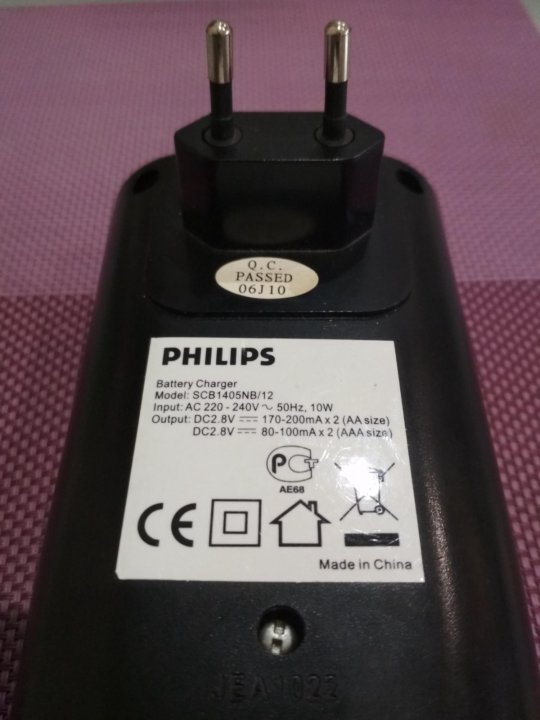 An intelligent charger switch between the stages automatically.
An intelligent charger switch between the stages automatically.
Automotive-style manual chargers do not have proper regulation for charging in stages. If you charge the battery too hard at the final stage, it won’t be able to reach a full charge.
The three charging stages are:
Bulk stage: At this stage, the battery will be charged up to about 70-80% of its capacity. The charger will be putting out a constant current determined by what charge mode or amp settings you have chosen. The voltage will increase gradually.
Absorption stage: At this stage, the charger will maintain voltage to the battery, but will taper off the charging current gradually as the battery gets closer to a full charge. This allows you to reach a higher state of charge without the risk of overcharging the battery.
Float stage: At this stage, the battery will be fully charged. All the charger is doing providing a small maintenance charge to keep the battery fully charged.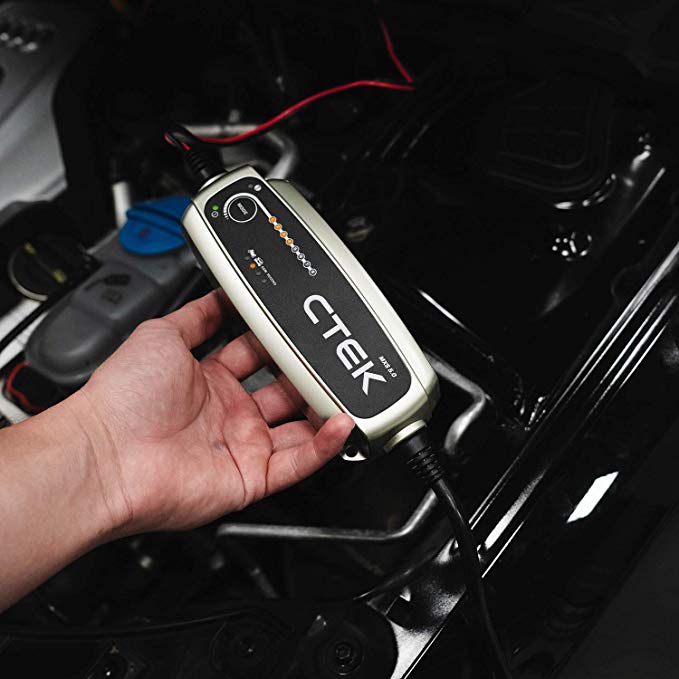 Both voltage and current will be reduced.
Both voltage and current will be reduced.
Intelligent chargers usually have different charge modes to choose from. Each charge mode will have a specific set of parameters that are optimized for different types and different sizes of batteries.
The charger uses microprocessors to collect information from the battery to see its current state of charge and to adjust the voltage and current accordingly.
For example, a lithium battery reaches 80% state of charge at a different voltage than a flooded lead-acid battery and needs the voltage input to be adjusted accordingly. And a gel battery cannot take as high of a charge rate as an AGM battery and will require a lower amperage.
All of these parameters are controlled by which charge mode you choose. Your chargers user manual will tell you more details about each charge mode your specific charger offer.
In general, there is no need to disconnect the battery terminals when you are charging an ATV or UTV battery, as long as you are using a fully automatic charger or a trickle charger at 1,5A or less.
Hooking up a high current booster charger, however, may cause a voltage spike that may damage your bike’s electronics. But you should never use a high-amp manual style charger on an ATV in any case, so this should be a non-issue.
If your bike, for some reason, has a high phantom drain, you may struggle to get any power to the battery. In this case, you should remove the negative terminal before charging your battery. Then you need to do some troubleshooting to identify what is draining your battery.
Also, please note that boosting your battery by hooking it up to another ATV using non-protected jumper cables may create a voltage spike that has the potential to damage your bike’s electronics. Always use cables that have built-in electronic protectors, and you should be fine.
For basic maintenance charging, where you are just topping off a battery that seems a bit low on power, there is no need to remove the battery from the bike.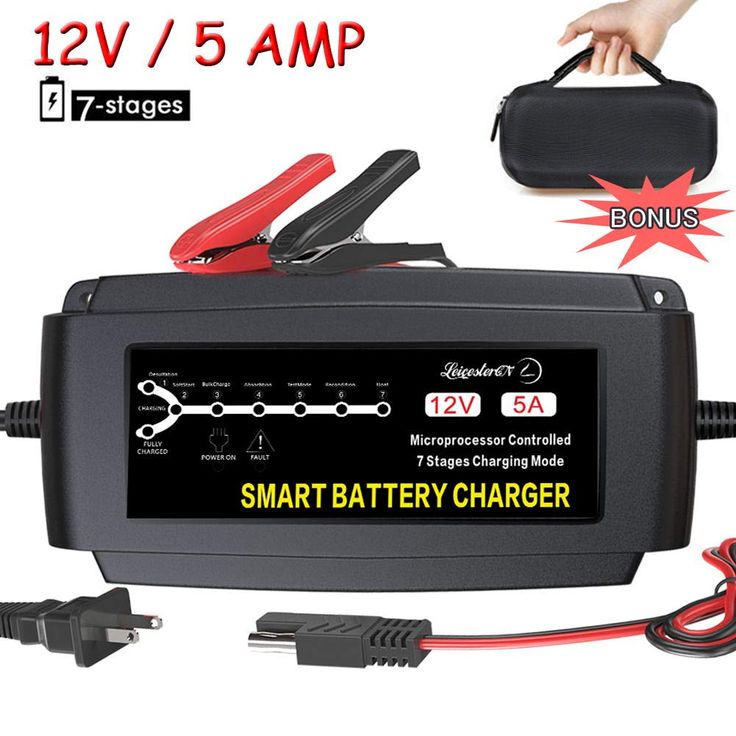
When you are charging a brand new battery that has never been charged before or a battery that has gone completely dead, you might want to consider removing it.
When doing a deep-charge, there is a slightly bigger risk for explosive hydrogen gas to build-up, as well as possible overheating.
By removing the battery from the ATV, you won’t cause any harm to the bike in the unlikely event that something goes wrong.
Flooded lead-acid batteries have removable caps to add more electrolyte fluid (distilled water) if needed. There is one individual cap for each cell or a strip that ties several caps together.
Some believe that you always need to remove these caps when you charge to let out any gas build-up. This is usually not necessary. Those caps are designed to vent any gas produced while charging, or there will be a separate vent.
Refer to your specific battery’s safety instructions to verify whether the caps need to be removed or not.
As long as the vents are not blocked (stuffed with mud, anyone?), you should have no issues leaving the caps in.
The only time you need to remove the caps is when you wish to check the level of electrolyte or top off one or more cells that are low on fluid.
When using a manual charger, you can remove the caps for a short period to give you an indication of when the charging process is finished.
When you see hundreds of bubbles forming on top of the battery cells, you know that the battery is full. Any further charging is overcharging.
PS! Remember that the gas you see forming is flammable, and the fluid is acidic. Never remove battery caps without wearing eye protection and vinyl gloves.
The charging process described at the top of this post will work both for doing a deep charge on a new battery as well as doing a refresh charge to top off a battery where the voltage has dropped a bit too low.
There are, however, a few things to keep in mind.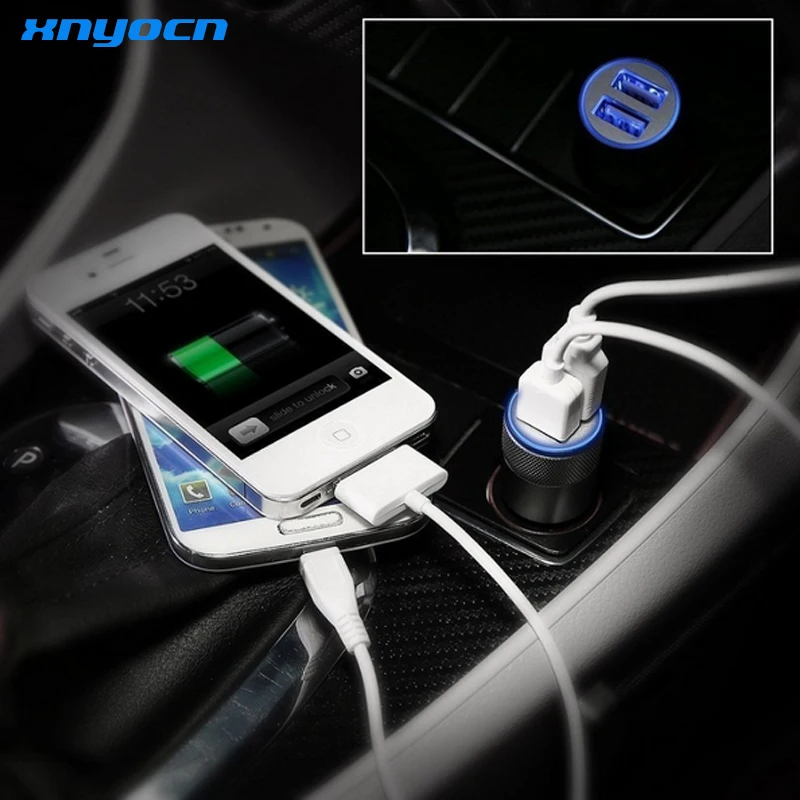
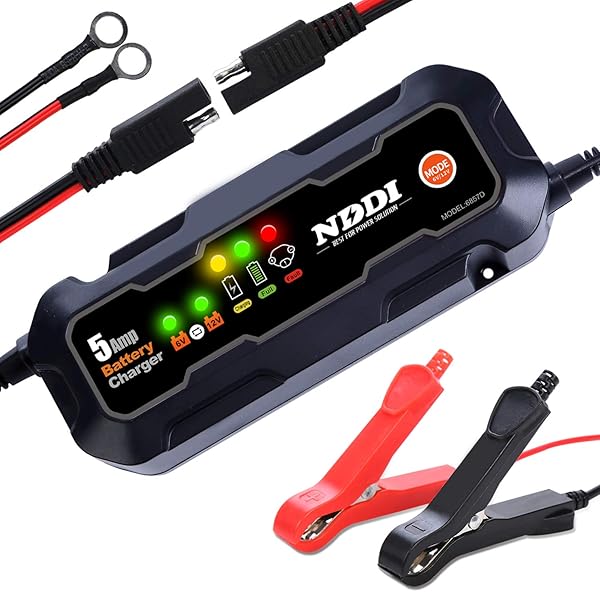
If you hook up the charger, but it fails to initiate it’s charging cycle, the battery voltage may have dropped below the minimum threshold recognized by the charger.
To solve this, you can use a fully charged battery to trick the charger into starting the charging process.
Tools and equipment required:
Follow these steps:

You should not use a car charger or a typical trickle charger to charge an ATV unless it has specific settings to limit the amp output as low as 1-3 amps. Car chargers typically come with an output of 10A. Charging an ATV battery at 10 amps would overheat it and damage it permanently.
You can use jumper cables to jump-start an ATV battery from a car battery, but it is not a suitable method for doing a full charge. The car must stay off as long during the whole process.
Electric ATVs are rapidly gaining popularity due to their efficiency and environmental friendliness. But many riders still do not know how to charge an ATV on a battery. Improper charging reduces the battery life or the battery loses its capacity quickly. Therefore, let's figure out how to charge a children's ATV and consider the key recommendations of experts.
There are two ways to recharge the ATV battery. The first and easiest is to connect the charger to the appropriate connector. All electric cars and scooters are charged in a similar way, although not all quadrics have a similar socket.
The first and easiest is to connect the charger to the appropriate connector. All electric cars and scooters are charged in a similar way, although not all quadrics have a similar socket.
If the ATV does not have a charging port, the rider will have to connect the battery directly to the charging station. To do this, you need:
It is important to note that lithium batteries have a charge control board. This means that after a full charge, the process stops. Although overcharging the battery is still not recommended.
Another important question many riders are wondering is how to charge an ATV battery with an in-car charger.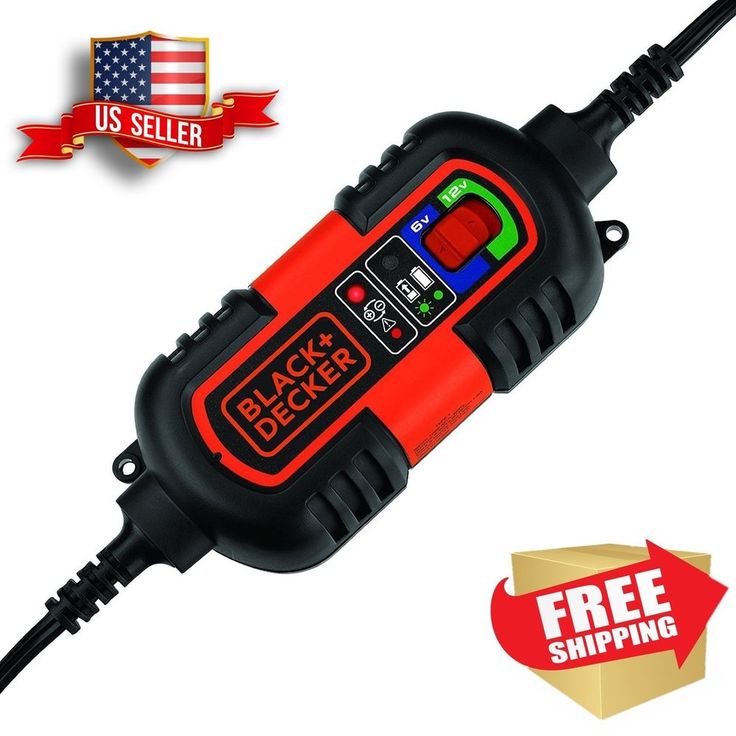 Yes, such a procedure is possible, but you need to properly configure the charger. For recharging, you can only use devices with adjustable charging current and the ability to set its minimum level (0.5-0.7 A).
Yes, such a procedure is possible, but you need to properly configure the charger. For recharging, you can only use devices with adjustable charging current and the ability to set its minimum level (0.5-0.7 A).
Important : The optimal current for charging the battery is 1/10 of the battery capacity (in Amps).
Each vehicle's user manual lists the optimum battery charging time. On average, this figure is 6-12 hours. The charging time depends on the generation of the battery, its capacity and the characteristics of the charger. Don't forget to charge the battery, though. If the battery has 30-40% capacity left, the recharging time should be reduced.
But what if you don't know how long to charge your ATV battery? In this case, you need to almost completely discharge the battery and charge it for 8 hours. After that, the battery should be installed on the quadric, and the charge level should be assessed.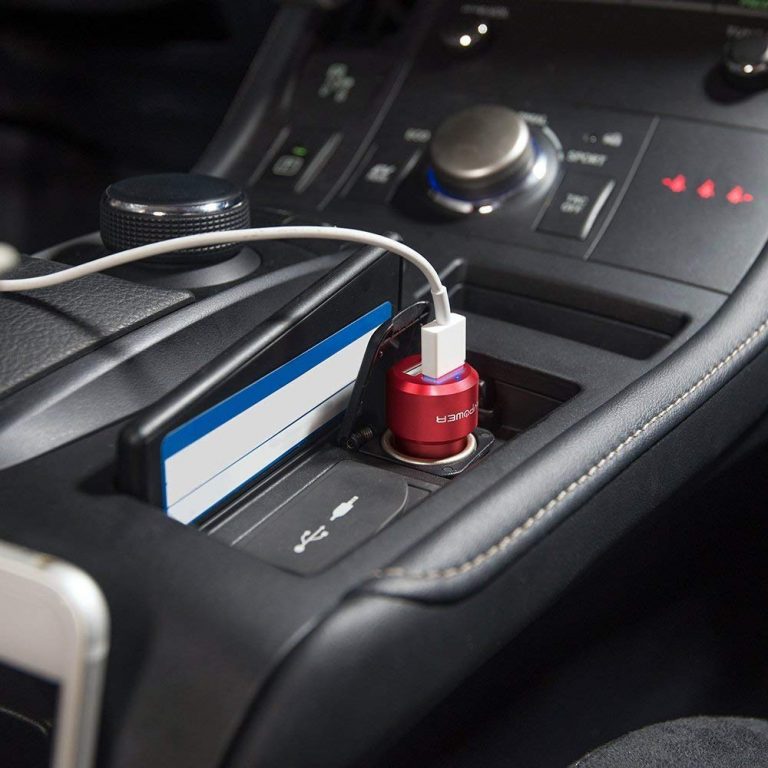 If the indicator shows 100%, next time you need to charge the battery for 6-7 hours. In this way, you can determine the optimal recharging time.
If the indicator shows 100%, next time you need to charge the battery for 6-7 hours. In this way, you can determine the optimal recharging time.
Also remember that overcharging is the main enemy of batteries. It is strongly not recommended to leave the battery connected to the network for 15-20 hours. This leads to a decrease in battery capacity and, accordingly, a decrease in the operating time of the quadric.
Knowing how long it takes to charge an ATV, you can make a schedule for recharging it. For example, the battery can be connected to the network in the evening or after each trip. You can also purchase a replacement battery, thereby increasing the riding time on the ATV.
The battery of any electrical equipment must be properly maintained. Violation of the recommendations may lead to a decrease in battery capacity or damage to it. To avoid such problems, it is recommended:
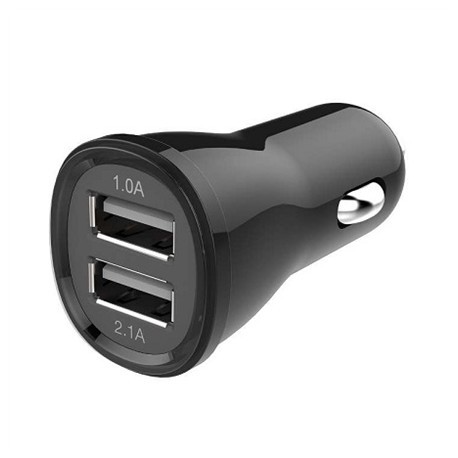
Separately, it is worth mentioning the "buildup" of the battery. Immediately after purchasing the equipment, you will need to fully charge and charge the ATV several times (2-3 times).
Most riders store their bikes before winter. And in order for the device to be ready for operation in the spring, it must be properly preserved. Preparing an electric quad bike for wintering is quite simple, you just need to find a warm and dry place to store the quad.
Another important conservation point is battery preparation.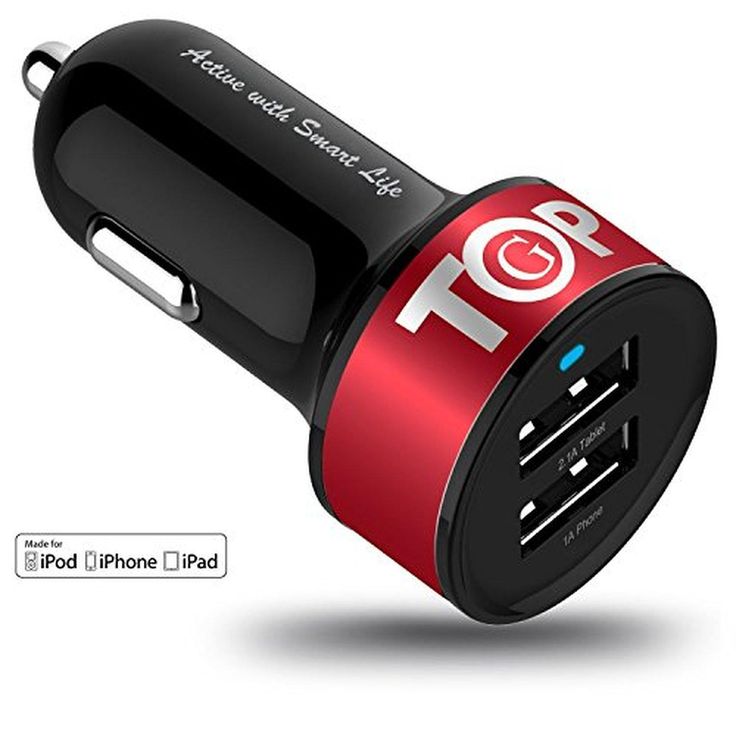 Before wintering you need:
Before wintering you need:
Note : If you leave the quad battery in the cold, the battery will simply "leak" and stop working.
11/16/2020 7764
Many riders don't know how to properly charge their ATV battery.
In fact, if you don't properly charge your ATV's battery, you can cause extremely significant damage.
If you're puzzled too, then this is your lucky day, because I'll most likely show you in detail how to properly charge an ATV battery.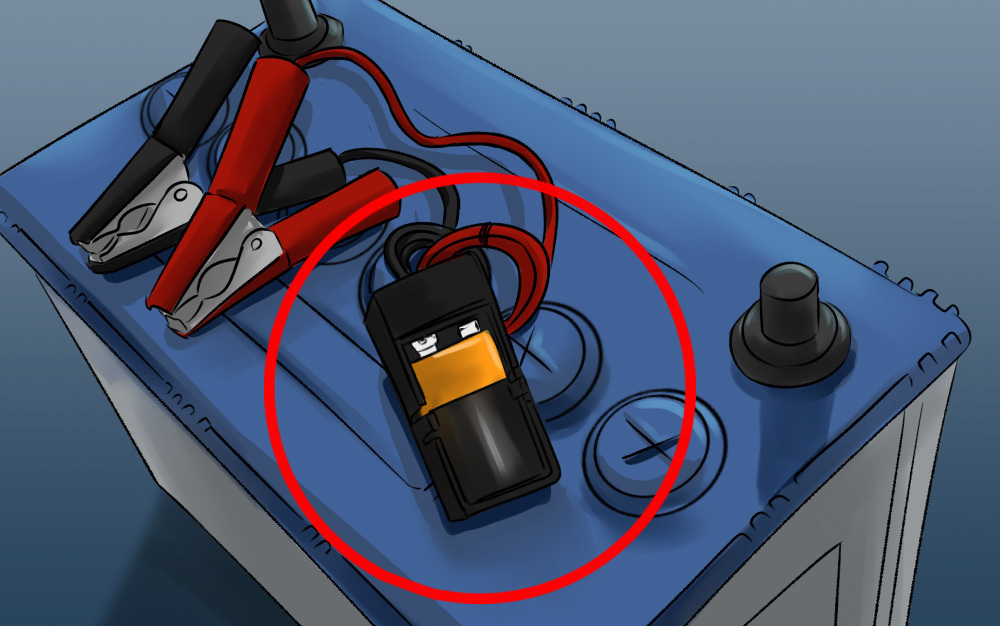
Contents
The ATV has a built-in engine-powered charging system. But the current it provides is not very high.
You can charge the battery during long trips, but this is not always practical. Instead, you can use an external charger.
I will give you 3 easy ways to charge your ATV. By following the 3 steps below, charging your ATV is a breeze.
Before starting all the work, it is necessary to prepare some tools in advance so that you can better charge your ATV. With the right tools, the process is so simple that just about anyone can complete it.
When all the tools are ready, let's get started.
Keep the battery and charger dry throughout the charging process .
In addition, the battery should be somewhere well ventilated to ventilate any gases generated during the charging process.
Recharging or even simply recharging a battery causes a chemical process that releases explosive hydrogen gas. With proper ventilation, you reduce the risk of the gas being agitated by a spark, which could lead to an explosion.
A garage or shed where you can leave the garage door open would be a great place.
If you don't have a completely dry and well-ventilated area that will fit the entire ATV, consider removing the battery from the bike to charge it.
Game Machine ATV and all accessories must be turned off while charging. to stop the sparks.
0033 open the seat of your ATV to make sure you have access to the battery.
To remove the ATV seat, you will need to use a screwdriver to remove the screws securing the seat, and then you need to start loosening all the screws that protect the ATV battery.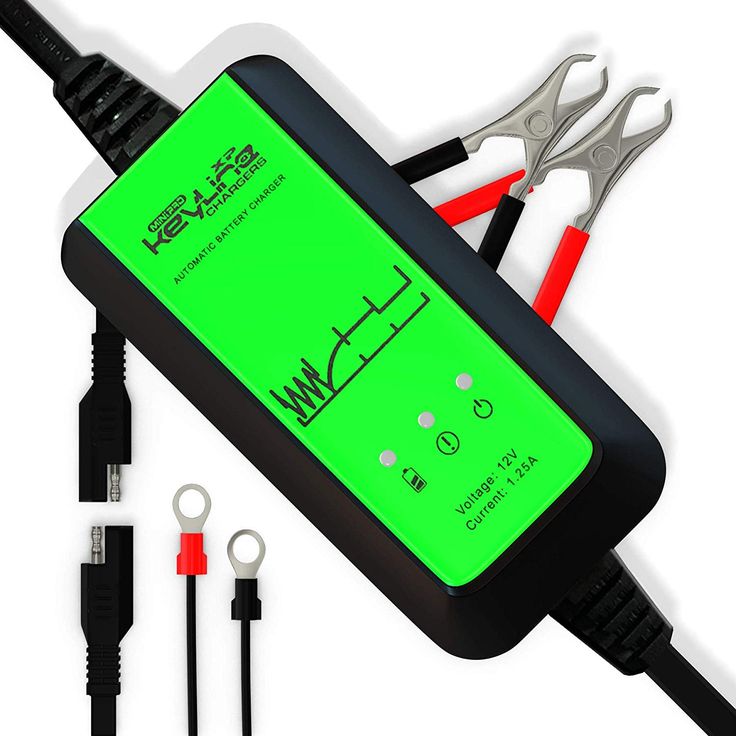
It is very important to make sure that the screwdriver you are using is suitable for the screws that hold the seat in place to ensure that it does not damage the screws which can be very difficult to remove once they are damaged.
Once you have removed the ATV seat and gained access to the battery, you will need to get rid of the battery covers .
After removing the battery cover, you must determine which battery is in your ATV. This should be clearly classified on the side.
If you can't check the tag or it's missing, here's how to find out which battery you have.
If there is liquid inside and there are removable caps on the front, it is a flooded lead-acid battery. In addition, it will have a partially transparent body, which will allow you to monitor the level of liquid inside.
If there is liquid inside, but there is a flat top without any covers, it is a sealed lead acid battery. This can also be a VRLA battery.
This can also be a VRLA battery.
However, if the battery looks like lead acid, has a high level, and you can't hear liquid inside, it's a gel cell or AGM battery.
If the battery is small and very light, it is a lithium-ion battery.
All ATV batteries, regardless of type, require a 12V charger that provides a low current of 1 to 3 amps. .
Sealed lead-acid, sealed lead-acid, VRLA and AGM batteries can be recharged with a manual charger. However, you need to monitor the charge of the battery with a voltmeter in order not to overcharge it.
This is especially important for sealed lead acid and VRLA batteries, as they cannot be recharged after recharging and may be permanently damaged.
For gel batteries you will need a charger, especially for this type of battery. It's the same with lithium-ion; try to find a lithium-ion compatible charger.
If you want to avoid all these problems, we recommend purchasing an automatic charger .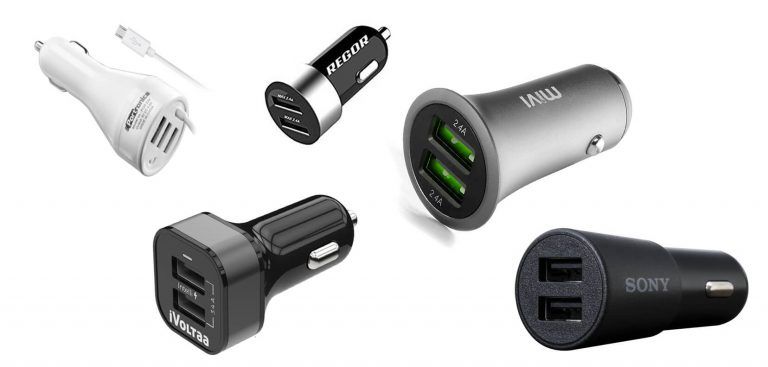 Unlike a manual charger that needs to be unplugged or the current setting changed, once the battery reaches a certain level, you can plug in an automatic charger and walk away as well.
Unlike a manual charger that needs to be unplugged or the current setting changed, once the battery reaches a certain level, you can plug in an automatic charger and walk away as well.
It instantly detects the battery voltage and provides the correct voltage and current. It will automatically stop charging or enter trickle mode when the battery is fully charged. So you never have to worry about damaging your ATV battery.
The ATV battery can be charged while it is in the vehicle or removed. Just make sure you charge it in a well ventilated area , the charging process creates flammable gases .
If you are using a manual charger, check the battery voltage with a voltmeter . This will tell you how low the battery is, as well as how long it will take to charge it.
Next, connect the red wire of the charger to the positive terminal of the battery and also the negative wire to the negative terminal of or a piece of steel around the engine.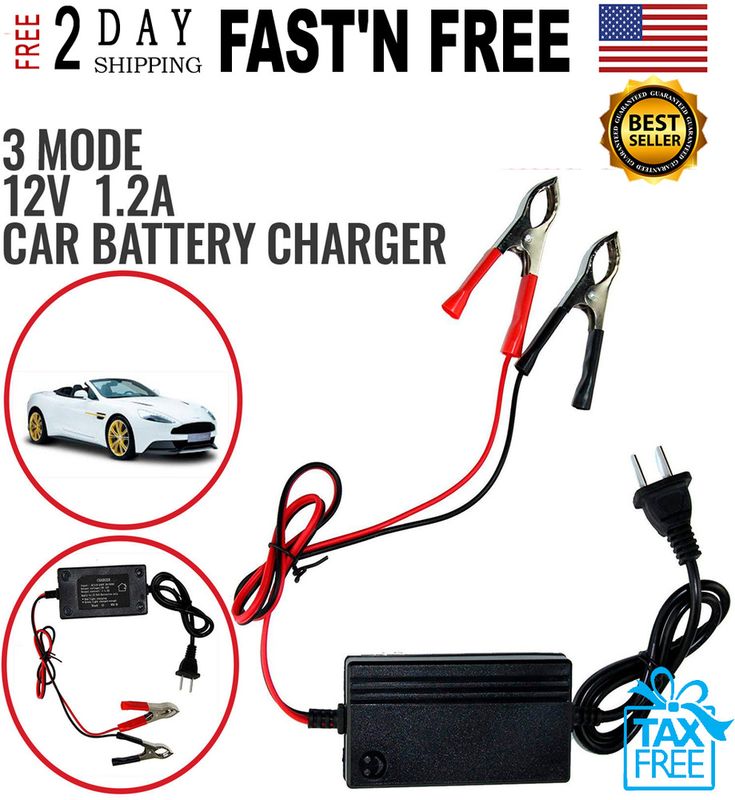
Set the hand charger to the ideal charging current. To be on the safe side, select an existing one that is no larger than a tenth of the Ah battery . For a 30 Ah battery, set the current on the charger to 3 A or less.
Connect the charger and start the charging process. Constantly check the charge level of the battery . When it reaches 80%, halve the current. This allows the battery to fully charge.
When fully charged, turn off the charger quickly. If you leave the battery for a very long time, you can enable maintenance mode if the charger has it, or purchase a battery tender to keep it charged.
The automatic battery charger is much easier to use. You don't need to check the battery voltage or monitor the battery.
All you have to do is select the battery type and voltage. Many automatic/smart chargers have special charging modes for AGM, Li-Ion, GEL and other types of batteries.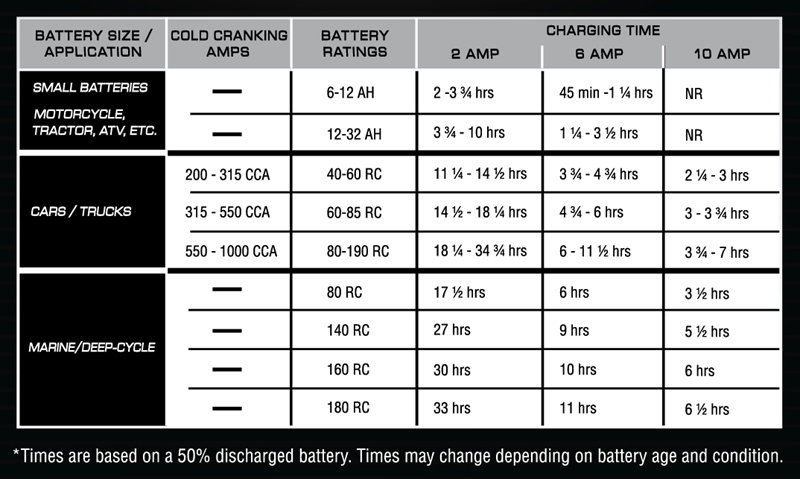
Connect the charger to the battery and leave it to charge as well. It will safely charge the battery and also keep it charged without overcharging.
The charging system on an ATV is not as efficient as on a car, so it will take longer to charge the battery properly.
Unless you make hour-long rides each time you start your bike, it will probably use even more power to start the bike than it can charge while you start it.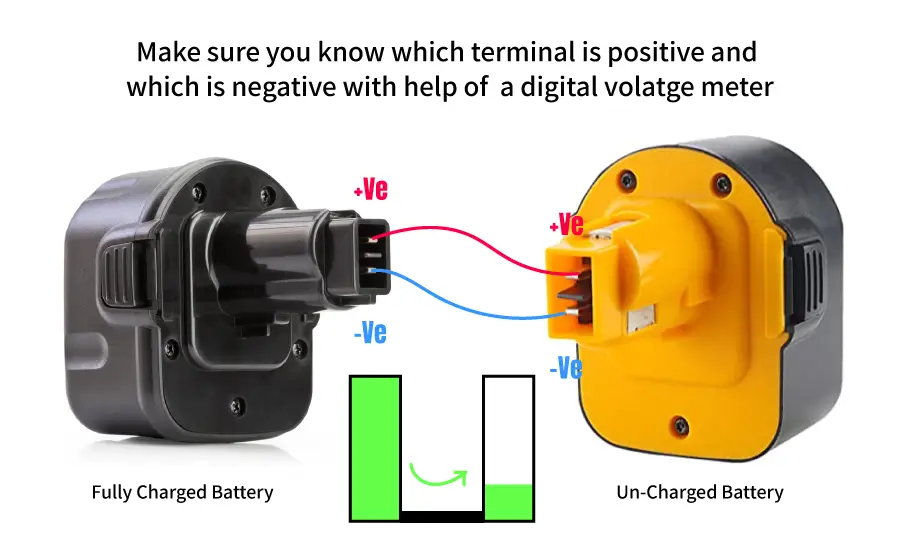
In addition, ATV batteries are small enough in both sizes to support the overall weight of the bike.
Add to that a few energy-hungry accessories like an ATV winch and you'll quickly find that your battery is too low to start your bike. Leaving the battery at a low charge level in time will further damage the battery.
That is why it is recommended to charge it from time to time to save yourself from problems in the future.
ATV batteries should be charged whenever battery voltage drop is below 12.4-- 12.6 volts . Charge the battery every fall and every spring, and use the battery to keep it in good condition when the ATV is left idle for long periods of time without use.
Car battery chargers typically deliver 10 amps of existing ones, which is too much for an ATV battery. It can overheat and also permanently damage the battery.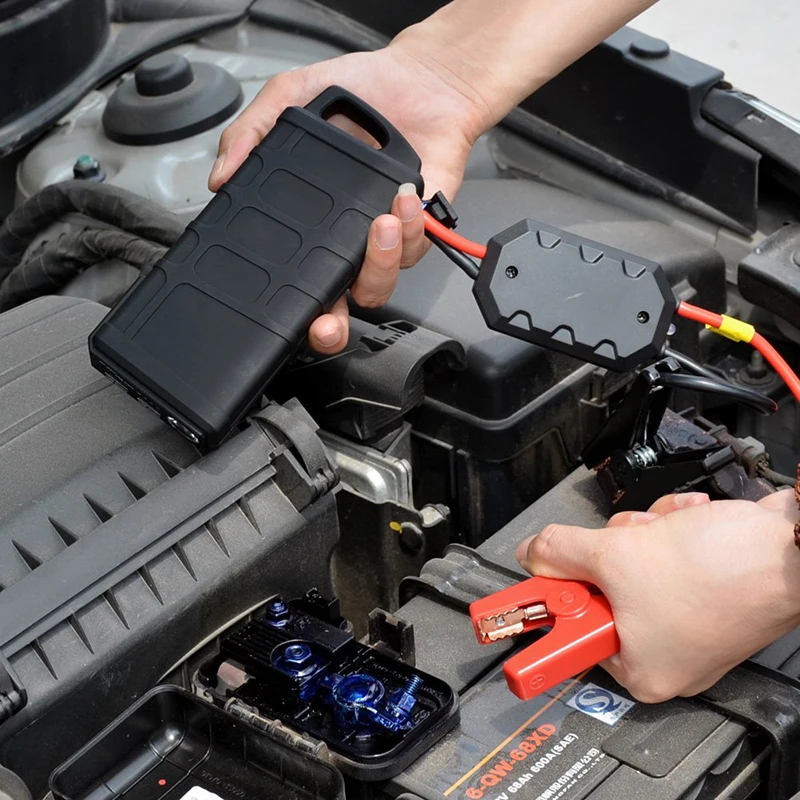
If the charger is not set to limit current to less than 3 amps, do not use the car or truck charger.
If you can reduce the current to 3 amps, use the same as the manual charger.
Yes, you can charge your ATV battery with your car, but only to give it a boost. This is useful if your ATV won't start because the battery is dead.
Use the jumper cable to connect the car battery to the ATV battery. Do not start cars and trucks . This can give too much power and also damage the ATV's small battery.
Vehicle battery has sufficient charge to revive a dead ATV battery. After a few minutes, disconnect the connecting cable and try to start the ATV again.
To emphasize, this technique is just for starters . Do not use it to fully charge an ATV battery, given that you have no control over how much current and voltage it receives.
Yes, you can recharge your ATV battery.